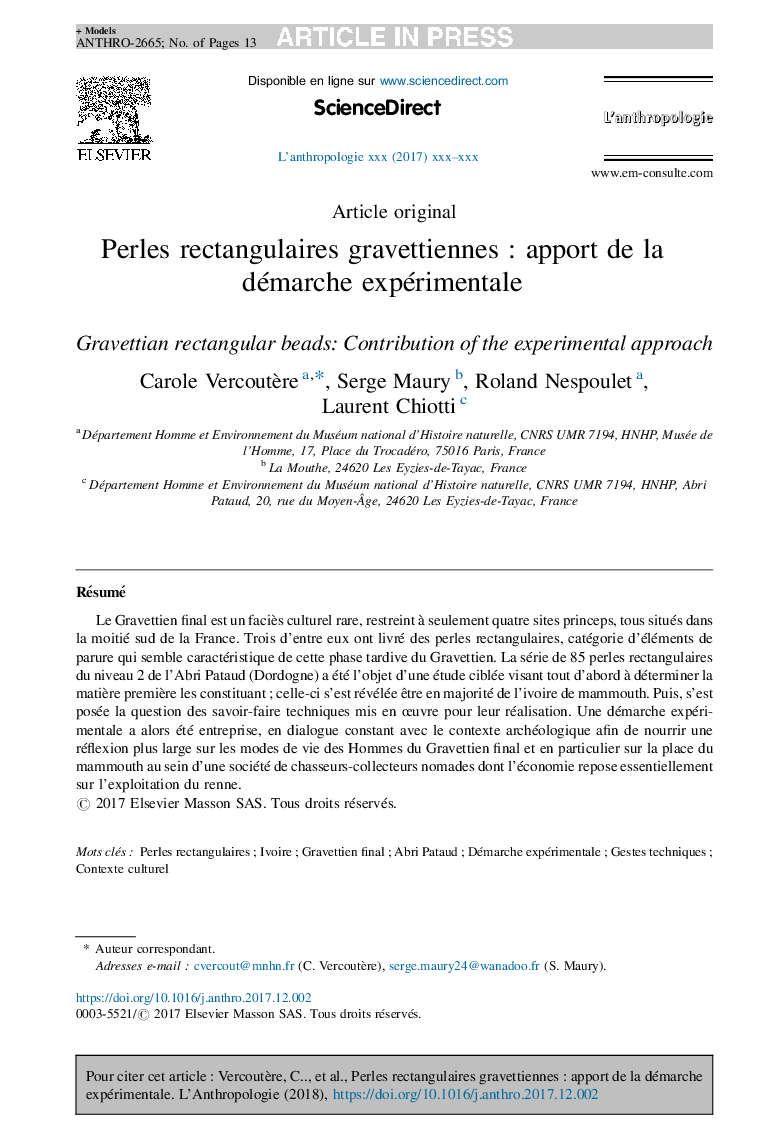| Article ID | Journal | Published Year | Pages | File Type |
|---|---|---|---|---|
| 7439813 | L'Anthropologie | 2018 | 13 Pages |
Abstract
The cultural facies called Final Gravettian is rare, restricted only to four reference sites located in the south half of France. Three of them yielded rectangular beads, which constitute a category of ornaments that seems to be characteristic of this late phase of the Gravettian. The series of 85 rectangular beads from the level 2 of the Abri Pataud (Dordogne) was the object of a targeted study aiming first at determining in which raw material these beads were made that turned out to be mammoth ivory for the great part. Therefore, the question of what are the techniques used to make these beads. In order to answer an experimental approach was managed with a constant dialogue with the archaeological context. This allow us to contribute to an enlarged discussion about the lifestyles of people who lived during the Final Gravettian and more precisely about the role played by the mammoth within a nomadic hunter-gatherer society with an economy essentially based on the exploitation of the reindeer.
Related Topics
Social Sciences and Humanities
Arts and Humanities
History
Authors
Carole Vercoutère, Serge Maury,
